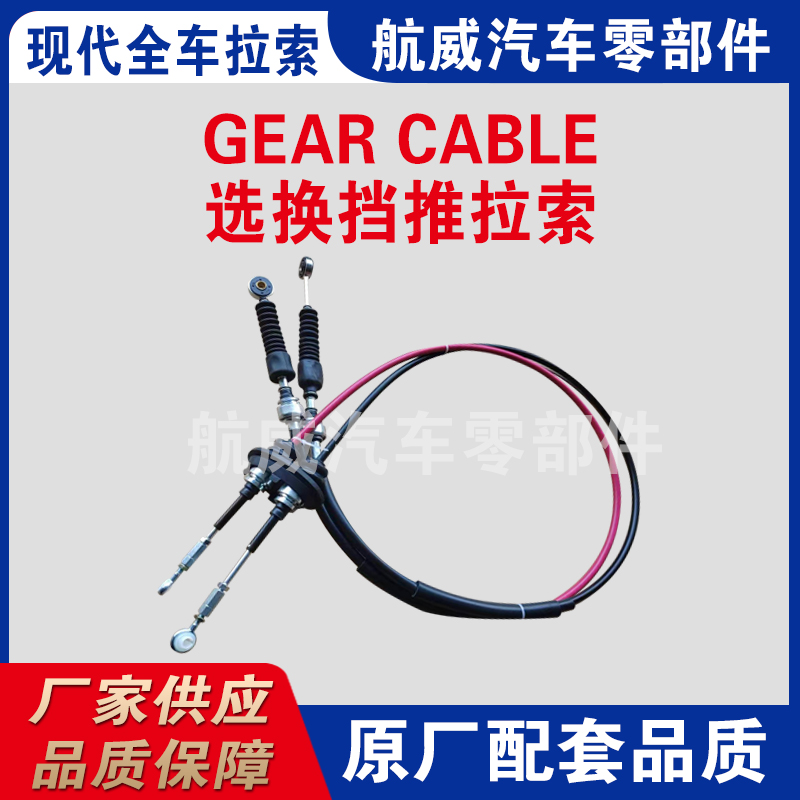throttle cable control
Understanding Throttle Cable Control An Essential Component of Engine Management
Throttle cable control is a critical component in the operation of internal combustion engines, particularly in automotive and motorcycle applications. This system governs the air and fuel mixture that enters the engine, thereby directly influencing engine performance and responsiveness. In this article, we will explore the role of throttle cable control, how it functions, its importance in vehicle dynamics, and recent advancements in throttle technology.
What is Throttle Cable Control?
At its core, the throttle cable connects the accelerator pedal to the throttle body of an engine. When a driver presses the accelerator pedal, the cable pulls on the throttle valve, which regulates the flow of air into the engine. This mechanism allows the engine control unit (ECU) to adjust the power output based on the driver’s demand, ultimately impacting the vehicle's speed and acceleration.
How Does It Work?
The throttle cable system typically comprises three main components the accelerator pedal, the throttle cable itself, and the throttle body. When the accelerator pedal is depressed, the motion is transmitted through the throttle cable, which is often a simple mechanical cable, though electronic throttle controls have become increasingly common.
In a conventional system, the cable is connected to a spring-loaded throttle plate in the throttle body. As the cable pulls the throttle plate open, more air enters the engine, allowing more fuel to be mixed with this air, resulting in increased engine output. The responsiveness of the throttle system is crucial, as a lag in the response can lead to a suboptimal driving experience.
Importance of Throttle Cable Control
throttle cable control

The throttle cable control system plays a vital role in maximizing vehicle performance and safety. For instance, precise throttle control allows for smooth acceleration, improved fuel efficiency, and enhanced engine response. Drivers expect their vehicles to react instantaneously to their inputs; therefore, any issues in the throttle cable system can lead to reduced performance and potential safety hazards.
Moreover, with advancements in technology, many modern vehicles employ electronic throttle control (ETC) systems. These systems use sensors and actuators instead of a physical cable to regulate the throttle position. ETC provides several advantages, such as the ability to integrate with other vehicle systems, improve fuel efficiency, and enhance safety features like traction control and stability management.
Advances in Throttle Technology
The transition from mechanical throttle cable systems to electronic throttle control has paved the way for various advancements in automotive technology. One significant development is the introduction of drive-by-wire systems, where the throttle response is adjusted according to driving conditions. This technology allows manufacturers to calibrate throttle response for different driving modes, such as eco, sport, or comfort, providing a more tailored driving experience.
Additionally, ETC systems can be programmed to improve vehicle safety. They can implement features like anti-lag systems for turbocharged engines, ensuring a more constant power delivery under varying conditions. Furthermore, these systems can communicate with hybrid and electric powertrains more effectively, optimizing the integration of electric motors and combustion engines for improved performance and efficiency.
Conclusion
In conclusion, throttle cable control is a fundamental aspect of engine management that significantly impacts vehicle performance, safety, and driver experience. While traditional mechanical systems are still prevalent, the shift towards electronic throttle control has enabled greater flexibility and integration with modern vehicle technologies. As automotive innovations continue to progress, understanding systems like throttle cable control remains crucial for both manufacturers and consumers, ensuring that vehicles remain responsive, efficient, and safe on the road. As we move forward, the evolution of throttle control technology will undoubtedly influence the future of transportation, setting the stage for even more advanced vehicular capabilities.
-
Workings of Clutch Pipe and Hose SystemsNewsJun.04,2025
-
The Inner Workings of Hand Brake Cable SystemsNewsJun.04,2025
-
The Secrets of Throttle and Accelerator CablesNewsJun.04,2025
-
The Hidden Lifeline of Your Transmission Gear Shift CablesNewsJun.04,2025
-
Demystifying Gear Cables and Shift LinkagesNewsJun.04,2025
-
Decoding Clutch Line Systems A Comprehensive GuideNewsJun.04,2025
